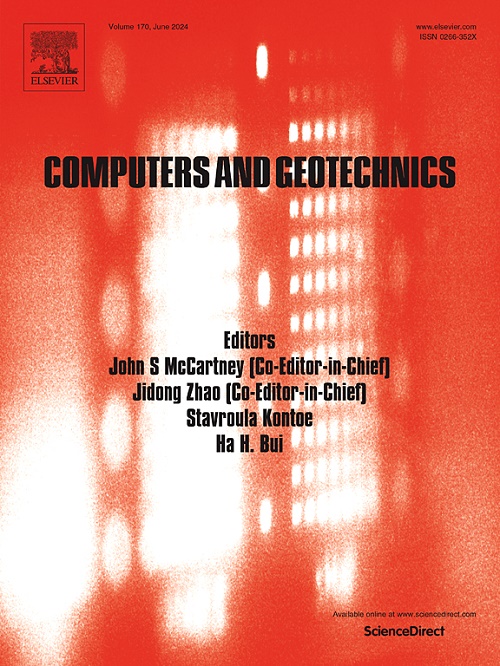DEM analysis of cyclic behaviors of clayey sand based on energy method
IF 5.3
1区 工程技术
Q1 COMPUTER SCIENCE, INTERDISCIPLINARY APPLICATIONS
引用次数: 0
Abstract
Evaluating cyclic liquefaction of soil from the perspective of energy dissipation provides a more comprehensive insight into its liquefaction mechanism. This study conducted a series of undrained cyclic triaxial tests using discrete element method to investigate the influence of plastic fines content (FC) on the dynamic characteristics of sand-clay mixtures. A new evaluation index, the Viscous Energy Dissipation Ratio (VEDR), is introduced to assess the energy dissipation performance of sand-clay mixtures. Macroscopically, it is shown that when FC < 30 %, increasing the fines content promotes the development of strain and pore water pressure, leading to a decrease in dynamic strength. However, when FC > 30 %, the trend reverses. In terms of energy dissipation, as the fines content increases, VEDR gradually transitions from the sand-like to the clay-like mode, exhibiting a unique transitional mode when FC = 50 %. Microscopically, the development of bond breakage is highly similar to that of VEDR. The bond breakage facilitates particle sliding and rolling, which is the fundamental factor causing the differences of energy dissipation between pure sand and sand-clay mixtures. This paper contributes to the mechanistic study of liquefaction criteria based on energy theory by establishing the connection between microscopic particle behavior and macroscopic energy dissipation during the cyclic liquefaction process.
求助全文
约1分钟内获得全文
求助全文
来源期刊

Computers and Geotechnics
地学-地球科学综合
CiteScore
9.10
自引率
15.10%
发文量
438
审稿时长
45 days
期刊介绍:
The use of computers is firmly established in geotechnical engineering and continues to grow rapidly in both engineering practice and academe. The development of advanced numerical techniques and constitutive modeling, in conjunction with rapid developments in computer hardware, enables problems to be tackled that were unthinkable even a few years ago. Computers and Geotechnics provides an up-to-date reference for engineers and researchers engaged in computer aided analysis and research in geotechnical engineering. The journal is intended for an expeditious dissemination of advanced computer applications across a broad range of geotechnical topics. Contributions on advances in numerical algorithms, computer implementation of new constitutive models and probabilistic methods are especially encouraged.
 求助内容:
求助内容: 应助结果提醒方式:
应助结果提醒方式:


